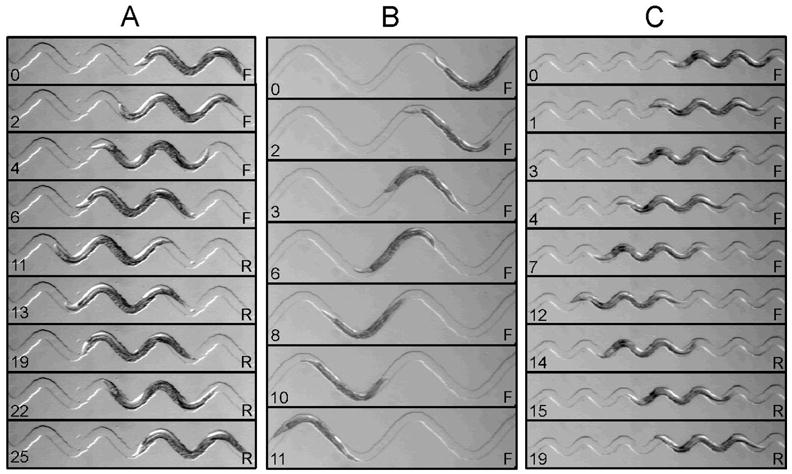Figure 6.

Crawling behavior in waveform sampler device. Shown are three different channel domains in which waveform was well controlled by the channel. A. Wild-type waveform (1.0 A, 1.0 λ). B. Low thrust (low F, see text) waveform (2.0 A, 2.0 λ). C. High thrust (high F, see text) waveform (0.5 A, 0.6 λ). Elapsed time (sec) is indicated on the lower left of each frame. Behavioral state (F, forward crawling; R, reverse crawling) is indicated on the lower right. Channel widths (in μm): A, 80; B, 80; C, 60. A = 200 μm; λ = 500 μm. Panels A, B, and C were taken from Supplemental Movies 3, 4, and 5, respectively.
